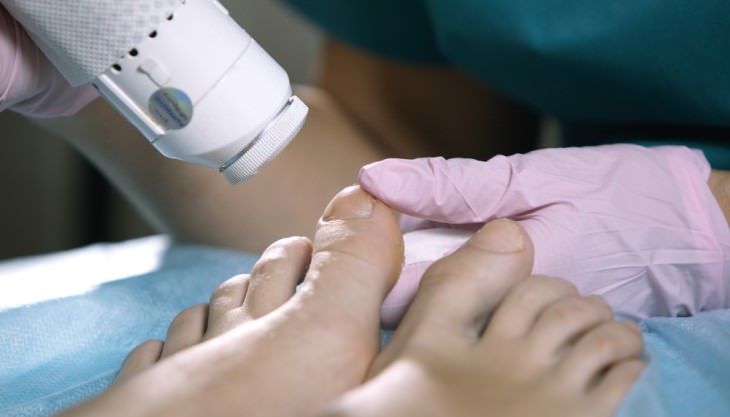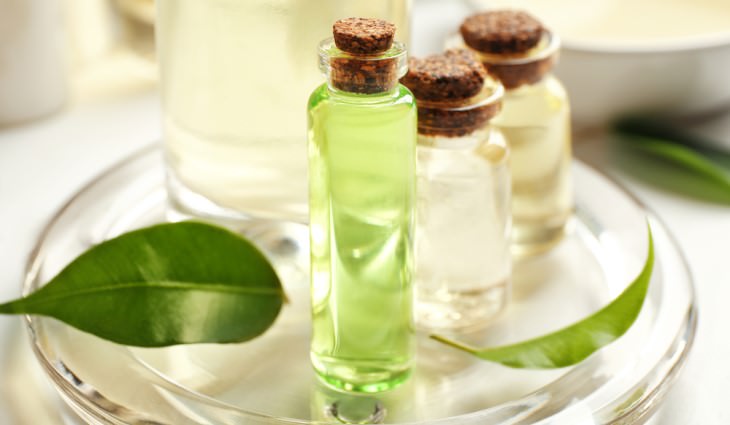
Skin fungus is a common infection that is caused when certain fungal pathogens breed in moist or warm environments. The fungus usually grows in shoes, socks, public areas like swimming pools or gyms, and in showers. The microscopic fungus lives on toenails, hair and skin and the most common symptoms are usually peeling, itchy or burning skin. If you suffer from some of these symptoms, there are a number of home remedies and habits that can easily treat fungal infections. We DO strongly recommend you consult a doctor for alternatives before doing this yourself.

1. How to stay clean
First and foremost, let's address the critical role of cleanliness. Our feet, frequently enclosed in shoes and socks, can easily become the dirtiest parts of our bodies. This is due to the accumulation of sweat, dirt, and dead skin cells, which create an ideal environment for fungal pathogens. Moreover, because they're often out of sight, it's easy to neglect the health and hygiene of our feet. Thus, maintaining cleanliness is paramount, not just for general foot health, but also for the prevention and treatment of fungal infections.
Regular foot baths are an effective way of ensuring that your feet stay clean. This isn't just a quick rinse in the shower; it involves taking the time to immerse your feet in warm soapy water, allowing the soap to penetrate and remove the grime that has built up. As you soak your feet, take the opportunity to wash them thoroughly. Pay special attention to the spaces between your toes, where fungus is particularly prone to grow due to the moist environment.
But washing alone isn't enough to maintain optimal foot hygiene. Exfoliation is another crucial step that is often overlooked. Our feet are subject to a lot of wear and tear, leading to the accumulation of dead skin cells. Not only can these dead skin cells serve as a potential food source for fungal bacteria, but they can also create a physical barrier that prevents antifungal treatments from reaching the live skin where the fungus resides.
Therefore, it's recommended to scrub and exfoliate your feet at least once a week. You can use a foot scrub or a pumice stone for this purpose. The process of exfoliation removes the dead skin cells, leaving your feet feeling smoother and fresher. Moreover, it exposes the new skin underneath, making it more receptive to any topical treatments you might be using against fungal infections.
In addition, be sure to dry your feet thoroughly after each wash or bath. Fungus thrives in moist environments, so minimizing dampness is key. Pay particular attention to drying between your toes.
2. How to keep your feet and shoes dry
As highlighted above, fungal organisms thrive in moist or wet environments. This is why damp feet and shoes can quickly become breeding grounds for these organisms. It's crucial, therefore, to ensure that both your feet and shoes are dry as often as possible to prevent the growth and spread of fungi.
This starts with your personal hygiene habits. After bathing or swimming, always take the time to dry your feet thoroughly, ensuring that no moisture is left, particularly between your toes. Simply patting your feet dry might not be enough. Consider using a hair dryer on a cool setting to guarantee that all the moisture is eliminated, as any remaining dampness can facilitate fungal growth.
When it comes to footwear, the same rules apply. Never wear shoes, including sandals not made from plastic, when your feet are wet. The enclosed, moist environment of shoes can facilitate the rapid growth of fungus, leading to potential infections.
If your shoes get wet, perhaps due to rain or perspiration, it's crucial to dry them properly before wearing them again. One way to do this is to place them upside-down by a window where they can air dry naturally. Sunlight can also be beneficial as it has natural antimicrobial properties. If you need to speed up the process, consider using a dryer. However, be careful with this method as high heat can damage certain materials in shoes.
In addition, consider investing in moisture-wicking socks. These socks are designed to pull moisture away from your feet, helping them stay dry throughout the day. Changing your socks regularly, particularly if you sweat a lot, can also be a significant step in keeping your feet dry.
Ultimately, the key to preventing fungal infections is to create an environment where fungi cannot flourish. By maintaining dry feet and shoes, you can reduce the risk of developing these types of infections.
3. Apple Cider Vinegar
Apple cider vinegar, a commonplace household item, is one of nature's most potent remedies and can be effectively used to treat ringworm thanks to its robust antiseptic properties. When utilizing vinegar for fungal infection treatment, the process begins with a thorough cleaning of the affected area using an antiseptic soap. This ensures that the area is free from any residual grime or sweat that might hinder the effectiveness of the treatment. Following the cleaning, apple cider vinegar is applied using a cotton ball to the same area. The treatment doesn't stop there; for maximizing the impact of the vinegar, gently massage the affected area for a few minutes. This massage aids in the absorption of the vinegar into the skin, enhancing its antifungal action.
4. Use Hydrogen Peroxide

Although this ingredient may seem scary, a mixture of hydrogen peroxide and water is one of the most effective home remedies for fungal infections. When you have a foot bath, add a bit of hydrogen peroxide into the warm water and soak for about 15–20 minutes. Make sure it is a 1:1 of 3% hydrogen peroxide to water. You can also rub the mixture into the affected area, but do so carefully and with gloves on. If your skin is sensitive to hydrogen peroxide, it is recommended to use the essential oils instead that are a bit lighter on the skin.
5. Tea Tree Oil

This is a magical solution to fungal infections of all sorts! Tea Tree Oil is a natural oil that has an excellent drying and purifying effect. Apply the oil or tea tree ointment to the affected area and leave your feet in the open for a few minutes until it absorbs. It is recommended to apply the oil after you shower to maximize the absorption into your skin. If the smell or strength of the oil bothers you, you can add it to a lotion or other scented oils. Other essential oils that work great are garlic oil and oregano oil.
Tip: Make sure you use diluted tea tree oil, as some people can suffer skin irritation or allergic reactions to undiluted tea tree oil. The best way is to mix a few drops of tea tree oil with a carrier oil, such as coconut or almond oil, before applying to the skin.
These are all great and almost entirely free home remedies to treat fungal infections of the feet, back and other areas. Once you find one that works great for you, make sure to share your wisdom with your friends and family!
6. Powder
There might be occasions when you need to wear the same pair of socks and shoes for more than one day consecutively. While it's not an ideal practice from a foot hygiene perspective, there are steps you can take to mitigate potential issues, such as the risk of fungal infections.
One effective approach is the use of baby powder. Baby powder, often composed primarily of talcum or cornstarch, has excellent moisture-absorbing properties. Before putting on your socks and shoes, lightly sprinkle a dash of baby powder inside them. The powder will act as a barrier, absorbing sweat and reducing friction between your foot and the shoe. This not only helps keep your feet dry, thereby reducing the environment fungi need to thrive, but also minimizes the risk of blisters.
Moreover, the powder can help prevent the dead skin cells trapped in your sock and shoe from adhering to your feet. These dead skin cells can harbor fungal spores, increasing the risk of fungal infections.
However, remember that using baby powder is a temporary measure and shouldn't replace good foot hygiene practices. Ideally, socks should be changed daily and allowed to air out and dry after each use, and shoes should be alternated to give them a chance to dry out fully between uses.
When wearing the same pair of shoes continuously, consider removing them periodically throughout the day to air out your feet and reduce the buildup of moisture. In addition, consider investing in socks made from breathable materials and shoes with good ventilation to promote airflow and reduce sweat accumulation.
These preventative measures, along with the use of baby powder, can contribute to creating a less favorable environment for fungal growth, significantly reducing the risk of infections.
Fungal infections are characterized by several distinct and uncomfortable symptoms, the most apparent of which include a persistent itchiness and a burning sensation in your feet. This discomfort can be accompanied by the emergence of a crusty, tough layer of skin on the top of the feet, a clear indication of a fungal invasion. Additionally, the development of small, irritating rashes, commonly referred to as Athlete's Foot, is another significant sign of a fungal infection. These rashes can be highly itchy, further intensifying the discomfort. Recognizing these telltale signs early on is crucial, as the skin infections caused by fungus are highly contagious. If left untreated, they can spread and become increasingly difficult to eliminate, reinforcing the importance of timely intervention and treatment.
8. Don't wear tight-fitting shoes or clothes
As highlighted earlier, fungal organisms flourish in damp environments, which your shoes and clothes can easily become due to perspiration from your feet and body. This moisture creates the perfect breeding ground for fungus. An additional strategy to manage and minimize the impact of a fungal infection involves your choice of footwear. Tight shoes can exacerbate the condition, as they restrict air circulation around your feet, creating a more enclosed and moister environment that furthers fungal growth. To prevent this, choose footwear that is well-fitted but not overly tight, allowing for adequate air flow and reducing the likelihood of worsening the infection.
9. Don't wear your shoes for too long
Despite the demands of our daily routines which often require us to be on our feet all day, wearing shoes for extended periods is one of the worst practices promoting fungal growth. It's a simple fact that our feet sweat throughout the day. When enclosed in footwear for long durations, the accumulated moisture provides the ideal condition for fungus to thrive. Therefore, whenever possible, make a conscious effort to remove your shoes, even if it's just for a brief period. This simple act can allow your feet to breathe and the accumulated sweat to evaporate, reducing the chances of a fungal infection taking hold.